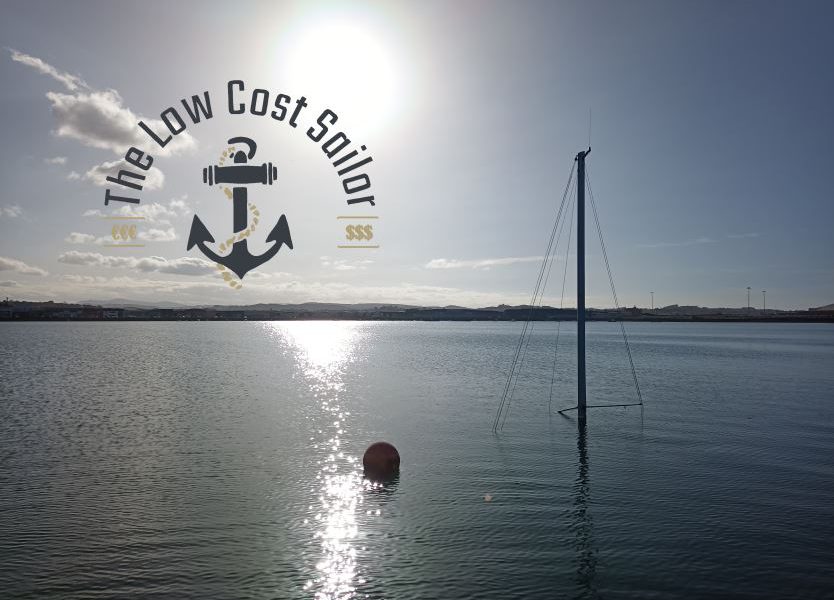How to prevent your boat from sinking. Alarms and prevention.
Greetings sailors,
Today’s post is going to be the first of several we will dedicate so that our ship does not sink.
In this post we will discuss how to prevent and detect a leak, how to gain time and how to make a repair of fortune to save our boat ..
But today we are going to talk about prevention and how to build a flood detection and early warning system that allows us to react on time… And of course, spending very little money… Less than 10 euros.
But first let’s get in position …
Boats sink
Boats sink, yes … It may seem strange to us but boats sink … and it seems to be a direct consequence of their floating …
Boats float by Archimedes’ principle:

Every object immersed in a fluid experience a vertical and upward thrust equal to the weight of the dislodged fluid.
That, what it means is that: as long as our boat weighs less than the weight of the water it displaces, everything is fine.
So sinking a boat is as simple as overloading it. And the easiest way to overload a boat is for it to have an underwater leak and begin to fill with water.
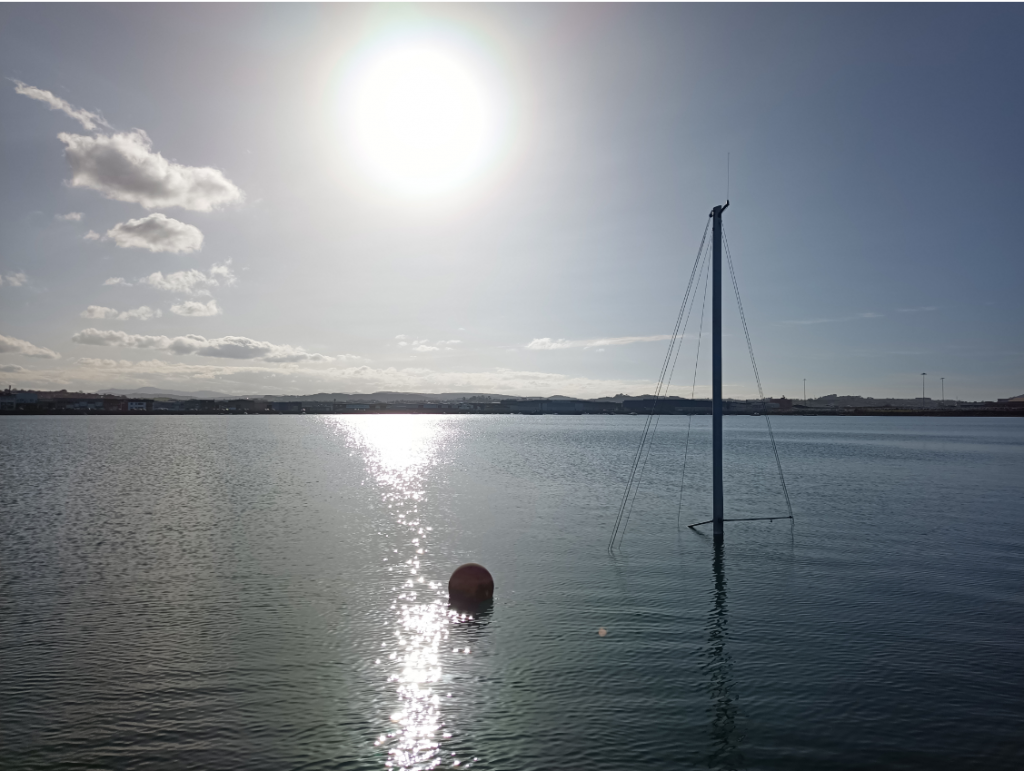
And that is normally the situation to avoid: a leak on our boat.
And preventing it, in principle, is simple since boats are designed to float and although a boat can sink because it carries water through the hatches, for example, in very hard seas .. Or because of rainwater, if we let it, very very abandoned …
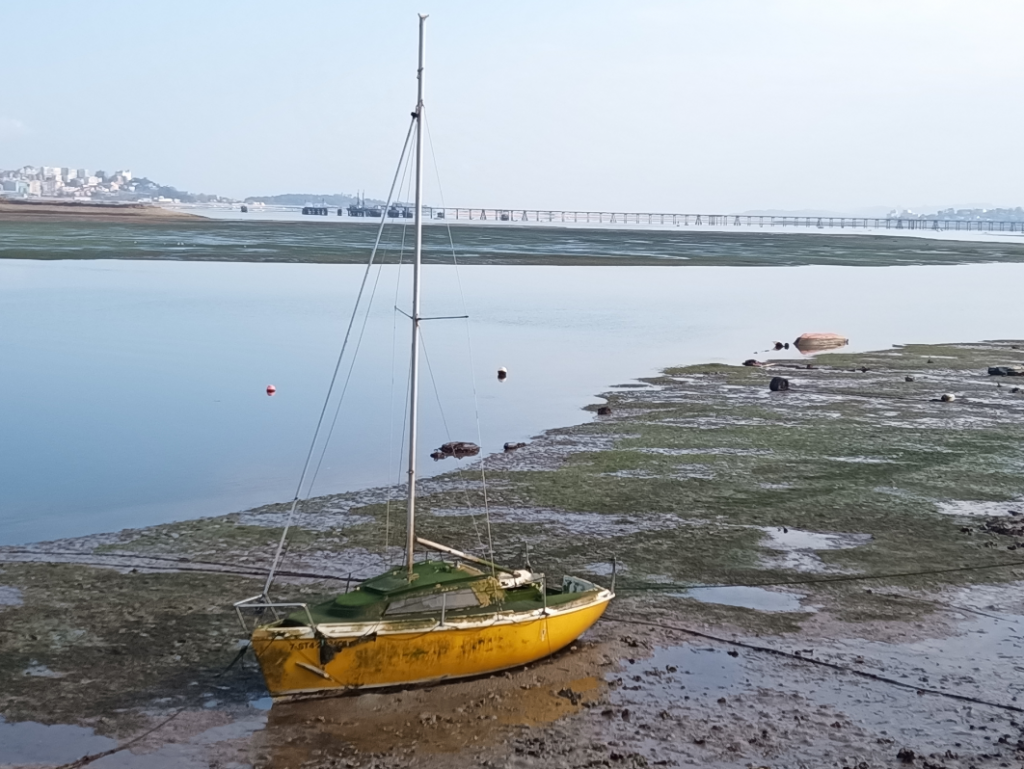
The most common cause is a leak under the waterline, usually after a collision in which a leak can be opened, or more commonly, by a mechanical failure that causes the breakage of a pipe, or a through-hull, or by clearance in the propeller shaft, etc.
The usual recommendations to prevent flooding usually go around the good maintenance of our boat:
- Periodically check the underwater fittings and thru-hull cocks. There my advice: it is better to check them when you have the boat out of the water… That, in my boat, I already finish with the toilet thru-hull in my hand, the first time I took the boat out of the water and I started to check fittings .. so better Let that happen to you are on dry and do not hit them hard to see if they are okay while you are in the water.
- Close the underwater fittings when you leave the boat in port, or as many as you can when we sail in harsh conditions. This is very good advice, but the truth is quite a pain when we use the boat regularly. Going through all the nooks and crannies to close the taps… And remember to open them when sailing, don’t leave the engine without cooling, for example… The truth is that I rarely remember to close them all.
- Good maintenance of the engine cooling system and the propeller shaft seals. There are not few cases in which an apparent leak in the hull is the engine itself spitting out the cooling water through a broken exhaust and throwing it inside.
Well, all these are the usual tips, which surely you all already know and that we all more or less follow according to our abilities and laziness…
But even following them closely, one day we may face a leak.
Detection
If we have an underwater leak on our boat … The most important thing of all is to know it and know it as soon as possible.
Time is essential, so today we are going to focus on detection.
When we have an underwater leak sailing, it is easy to realize it… Especially when the water reaches our necks. But it will take a good amount of time if we are out in the cockpit until we find out… So the idea is to have a warning system that alerts us quickly, like the ones we will see…
If we are not in the boat, things can be even more dramatic .. because by the time we realize it, the boat may already be sunk…
To give you an idea, a 2cm hole below the waterline will embark on the order of 50 liters per minute, 2cm may be the average size of many of our boat underwater fittings…
And a 4cm one, for example, that of a normal toilet, can ship 200 liters per minute of water on our boat.
And one of 10 CM, 1200 Liters of water per minute !! That can sink a 30-feet boat in about 12 minutes.
So time is very important … and for that, it is better to know that we have a leak as soon as possible …
Because if we are not on the boat, and we do not find out, even a small and slow leak of water can sink our boat slowly.
Purchases
We are going to see two different techniques:
The first, and more “simple”, is simply to put a siren that is activated when water is detected in our bilge and so we will find out.
For this, we are going to buy a float switch and a warning siren
- The switch can be for vertical mounting like this one (https://s.click.aliexpress.com/e/_AVEw7g) or for side mounting (https://s.click.aliexpress.com/e/_ADmdCA). Buy the one that best suits your needs, I have bought a pair of each, which are very useful .. Also at Amazon https://amzn.to/3eunrPS

- As for the siren … it depends on how loud you want it to sound. One like this (https://s.click.aliexpress.com/e/_ADuMVy) will be enough and you can control it directly with the switch. If you want to make sure that you listen to it, you can choose this one: https://s.click.aliexpress.com/e/_9z35km which is the one I use in the video, also available at Amazon https://amzn.to/3crBVxe

- Additionally, we are going to buy a 12v relay, in case, instead of a siren, we want to control something more powerful, such as the ship’s bilge pump if it is not already automatic. https://s.click.aliexpress.com/e/_9ubeHy or https://amzn.to/3vftVId

- Apart from cables, a switch to connect or disconnect the automatic siren or the automatic pump, I bought these that I use a lot on the panel of the boat: https://s.click.aliexpress.com/e/_A8B0Hc, although you can also opt for one of these more stylish: https://s.click.aliexpress.com/e/_A9AFAS
The second and most useful way will be to buy a WiFi flood sensor, very cheap, even easier to install, and that for less than 6 euros will send us an alert to the mobile through the wifi of our boat if it detects water. I specifically bought this one: https://s.click.aliexpress.com/e/_AEnwSW which is also available at Amazon https://amzn.to/3cnVqH5, but more expensive.

Once we have all the material we are going to start with the assembly of the two options:
Audible alarm and bilge pump automation
With the float switch, we are going to build our audible alarm. In the same circuit, we are going to take advantage of it to, at the same time, automate the bilge pump, which on my boat is not automatic.
The scheme that you will normally have on your boat will be something like this:

Typically we have a bilge pump connected to a switch and to our battery. So when we turn on the switch we activate the bilge pump.
We are going to add the siren following the following scheme:
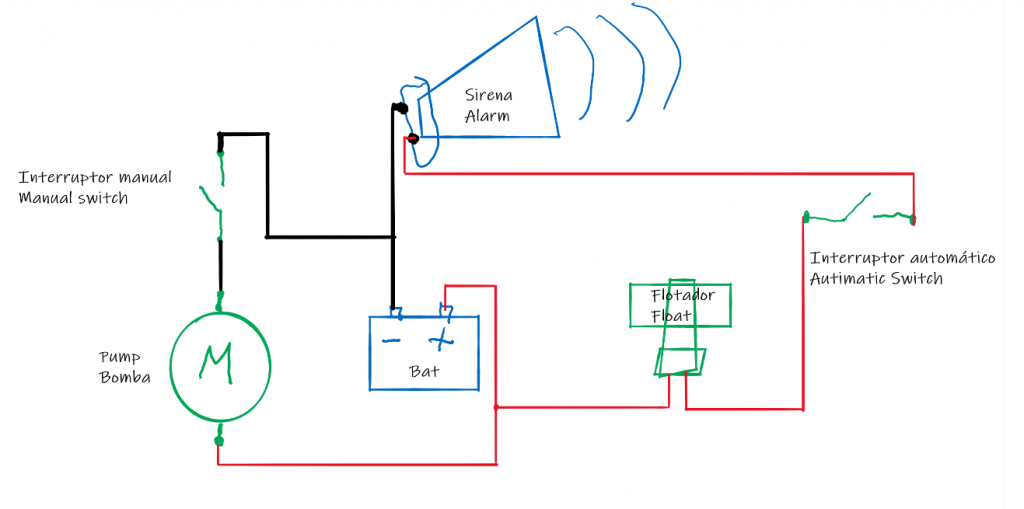
Basically we will have the float switch that will go to the bilge glued or installed on a bracket or similar, so that when the float floats, the switch closes (that means that the switch points up).
Connected to the switch we will have a switch that allows us to connect or disconnect the alarm, and finally the siren that will be connected to the battery and interrupted by both switches.
Finally, if we also want to use it to automate our bilge pump, the scheme will be as follows:
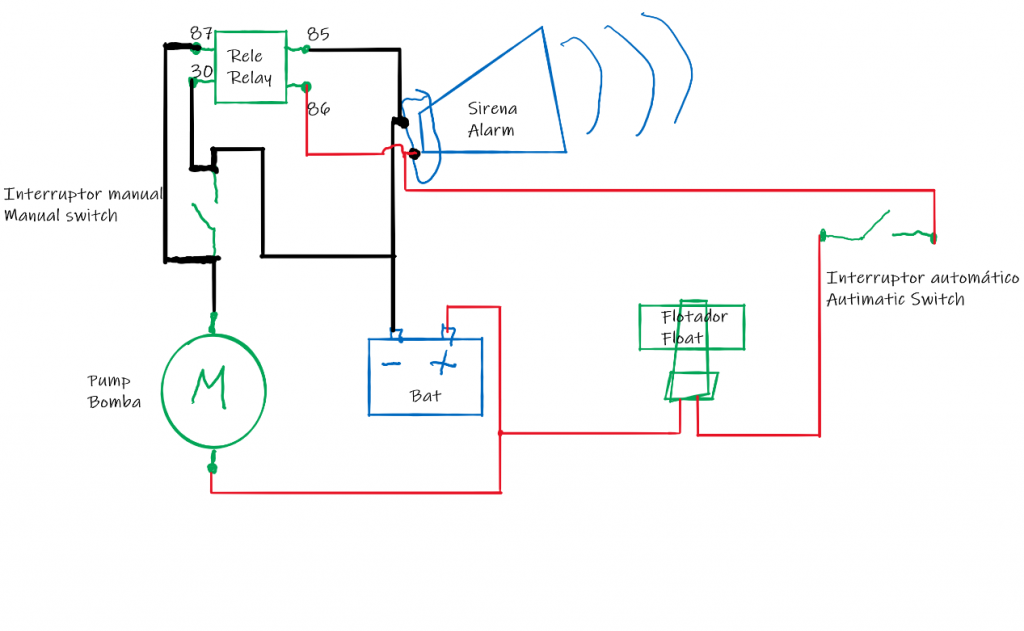
In parallel to the siren, we are going to connect a relay that will also allow us to control the switch of our bilge pump, so that when water is detected at the float the circuit is closed, the relay is activated and it closes the circuit of our bilge pump.

Installing it is not going to be that simple. Basically, because we have to run a cable from the bilge to the switch panel. That will be the hardest part.
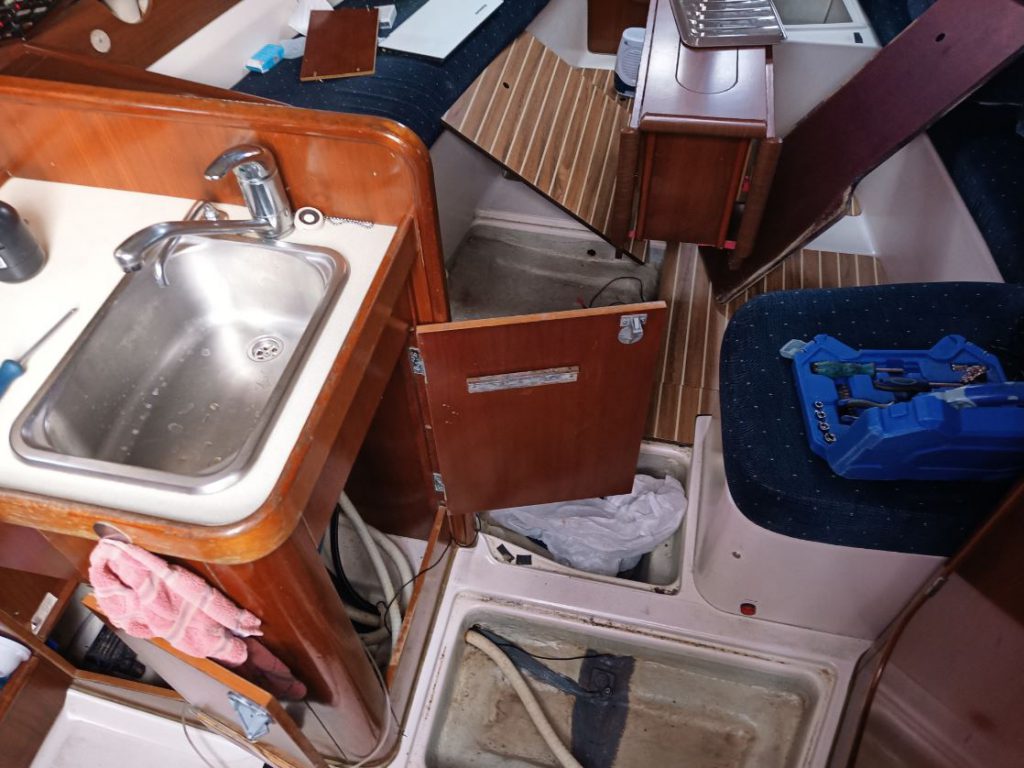
Once we have the cable there and the float in place, the thing is already easy .. Install the switch in the switch panel and put the siren connected to everything.

With this, we already have so that if there is water in the bilge we can hear the alarm from anywhere on the boat.
If we want to automate the pump, then simply put the relay in parallel (pay attention to the numbering of the relay pins, place them as in the diagram) and connect it to the switch that we currently have in our bilge pump.
And we have it ready, when we activate it, if there is enough water in the bilge, it will make the float float, close the circuit and sound the alarm. If we have also set the relay, the pump will be activated automatically.
But of course .. if we are not on the boat .. we will hardly hear the siren, no matter how big we put it ..
Bilge water detection WiFi alarm
To receive a notification on the mobile, things will be simpler ..
Of course, we will need to have WiFi with an internet connection on our boat, which, as I have already mentioned in other posts, is very useful and that you can do it in one of the following ways:
- It can be an old mobile sharing data
- A wifi that reaches us to the boat
- A box of those 4g routers with wifi, like this one from Aliexpress or this one from Amazon
- Or any other method… but my recommendation is that you see the post on how to install wifi on the boat.
Once we have our wifi it is very simple:
The WiFi flood sensor comes with double side tape to stick both the device and the part of the contacts … that when the water reaches its level it will be when it is detected and the notification arrives.

To configure it we will need to install the Tuya application from the Play Store, or the Apple Store
Surely you already have it installed from previous posts, but if not, check the attached video or the post on how to install an alarm on your boat.
We will register the device as: New protection sensor, there we will choose WiFi flood sensor, as in the photo.

And after configuring the Wi-Fi data of our boat, it will be ready and we can test it even before installing it. Every time the contacts come into contact with water, they will detect it and trigger an alarm notification.
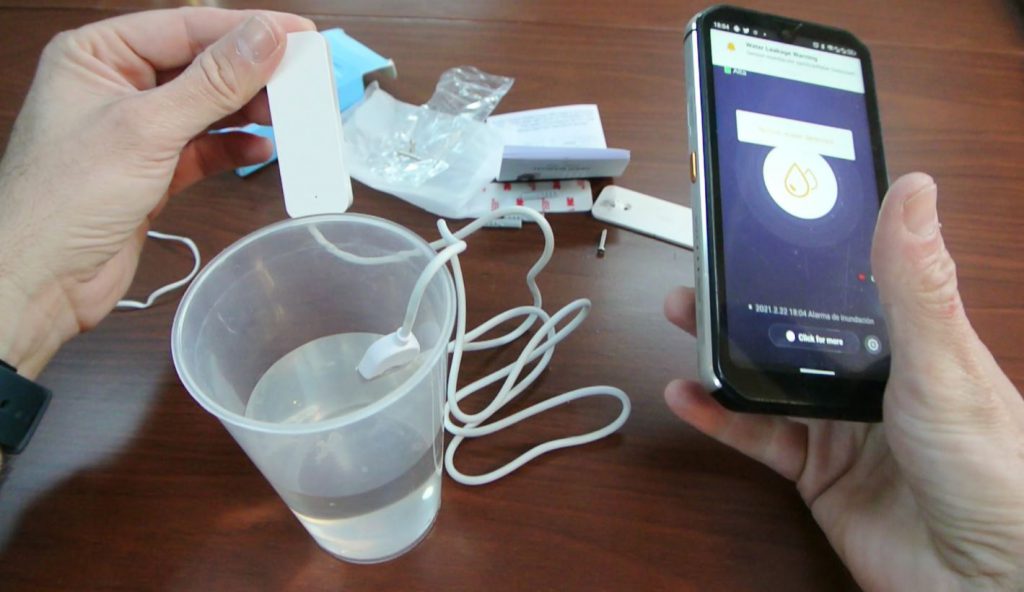
Now we will install it in our bilge, very simple:
- We place with the double-sided tape or with a flange (or with a screw, but without going through our hull) the end of the cable with the contacts, at the height of the bilge that we consider worrisome .. In my case a little below the float.
- We place, with the other double-sided tape, the other part of the sensor, somewhat higher, so that the water does not reach it or at least it takes a few seconds more than to reach the sensor and give it time to transmit (the taller the better).

And that’s it .. We can test it by pouring water at full or simply touching the two contacts with your finger.
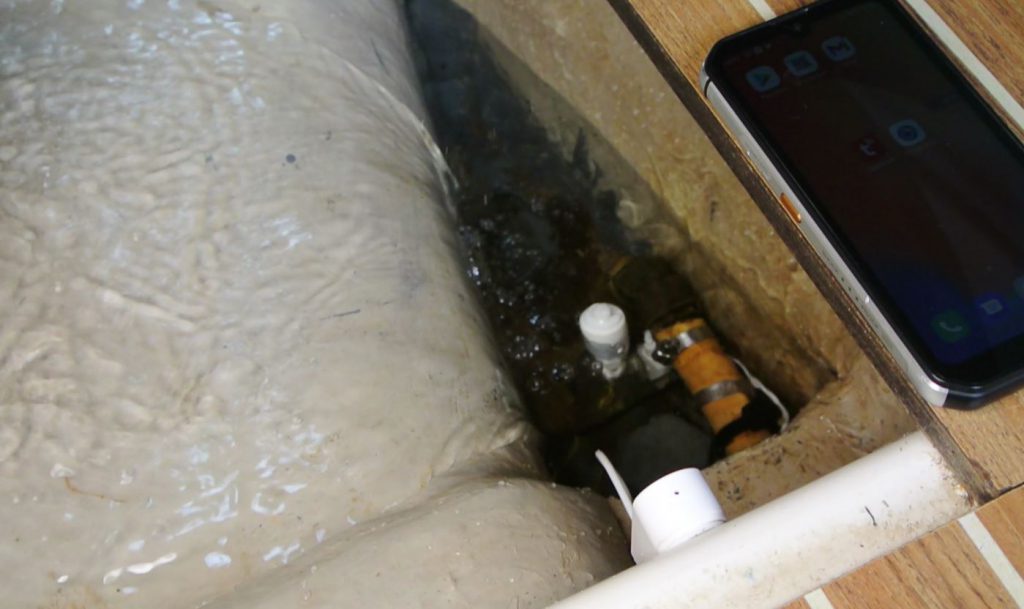
Well, everything is ready:
In my case, if water enters, the first one to detect it is the WiFi sensor that sends a warning to my mobile phone… I can usually connect to the interior camera (see post) to check what is happening and go quickly to the boat or call someone at the port to notify them.
Meanwhile, if the water continues to rise, the float will close the siren circuit, the boat will beep like crazy (hopefully someone nearby will find out) and the pump here will activate, giving me a little more time.
Conclusions
Letting the boat sink for not realizing it, I already told you that most of the times boats sink through a small leak and a long time of neglect, especially considering that we can put a warning system on the mobile for 6 euros .. it would be unforgivable.
It seems fundamental to me .. And, even in larger boats, you can put several sensors and identify according to the order in which they jump through where the water enters.
Do not miss the next posts on this topic in which we will see how to save time if we have a leak… And a surprising, and super useful, method to plug a leak that we should all know about .. (especially in its low cost version, which is what we will see here).
